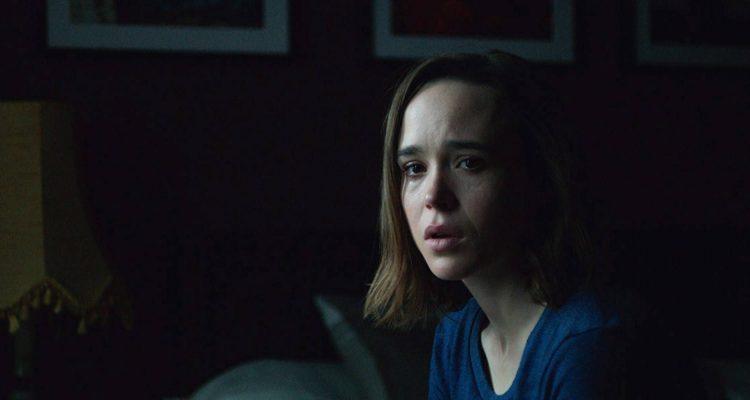Fairly simple premise here: about a half-decade after a zombie outbreak fails to do much damage to Europe (but somehow does a number on Ireland), a cure for the zombie virus is discovered and former-zombies begin to be rehabilitated and brought back into society. Our hero is Senan (Sam Keeley), who once was a zombie but now is cured, and is made to live with his sister-in-law, Abbie (Ellen Page), as he reintegrates into society.
I’ve noticed a trend of zombie-cure fare recently, particularly in TV, where “Les Revenants” might not exactly qualify but comes close, and “In the Flesh” is basically exactly “The Cured” from what I can tell. And while “Les Revenants” is far and away the best of the above, “The Cured” is a serviceable enough — if extremely, disappointingly predictable — addition to the subgenre.
There’s a sneakiness to this film’s first two acts, as if writer-director David Freyne is desperately trying to convince you that “The Cured” isn’t headed for the zombie-movie third act that it obviously, inevitably is. The early scenes in “The Cured” hint to a more subdued film, a film that theoretically could be satisfied climaxing with interpersonal drama rather than brains and zombie bites and “what do I do when a family member is bitten” morality plays that we’ve seen in literally every zombie movie, TV show, and comic ever made.
The film’s early going is largely about how society treats The Cured as they attempt reintegration, and The Cured’s response to same. While Senan is content with a quiet post-zombie existence, living with Ellen Page and working at the zombie rehabilitation center, his best ex-zombie friend Connor, played by Tom Vaughan-Lawlor, is (rightfully) disenfranchised by a society that rejects former zombies as “murderers.” Many of The Cured become even angrier at the Irish government when it announces its intent to kill all zombies who have not responded to The Cure. Connor begins to associate with a violent Cured terrorist organization, and the remainder of the plot is telegraphed from there.
So, two main frustrations with “The Cured.” First, as I’ve been saying, Freyne would have done better to forgo the third act zombie mayhem in favor of a quieter climax, focusing on the resolution of interpersonal conflict instead of societal conflict. We’ve seen zombies take to the streets hundreds of times, but when was the last time we saw two former zombies debate their respective philosophies as regards the government’s treatment of The Cured? Point is, what “The Cured” actually does in its third act is fairly standard stuff, right up to — and including — the final “gasp!” moment.
My second gripe with “The Cured” is this: it’s simply unbelievable that society would treat Cured zombies as cruelly as they do in this film. Senan and co. get called “murderers” throughout the film, and are treated as such. The general populace seems to regard them as killers who deserve no sympathy. There’s a central conflict that relates to a specific act of violence that Senan carried out when he was a full-on zombie. You just want to yell at the screen that these people were demonstrably not in control of their own bodies when they were infected, that clearly they did not want to be infected, and that perhaps what they went through was worse than anything experienced by the uninfected during the outbreak. Assigning them any responsibility for their zombie actions seems completely unreasonable, almost sociopathic, and I find it difficult to accept that it would be consensus among the Irish populace to dehumanize the recently Cured. Freyne obviously intends all this as a grand allegory for refugee crises/immigration politics, but the logic applied to anti-immigration politics simply does not apply to anti-Cured politics. The allegory doesn’t track, and neither does the movie’s internal logic.
What “The Cured” does have going for it is some truly impressive cinematography by Piers McGrail, without which “The Cured” would be a bad movie rather than a not-especially-good one. McGrail has an assured visual style; it’s cold in the way you’d expect a movie like this to be, but there’s a quiet stylishness to the film’s imagery that enhances the viewing experience. This is especially true in the movie’s earlier scenes, where McGrail demonstrates that you can extract just as much horror out of a simple dialogue scene, or a moment of introspection, as you can from a zombie attack. Once the film veers into more standard zombie territory, the cinematography becomes that of a more standard zombie movie: always competent but never notable.
There are some good performances here, too. Keeley doesn’t make a huge impact, but he’s totally okay in the film’s lead role (Ellen Page is top-billed, but she’s actually the third lead). Page is quite good even as she doesn’t have a whole lot to do (has she ever been bad in a role?). Tom Vaughan-Lawlor is the only cast member whose performance really stands out here, his Connor is pitch-perfect, quiet and scary, a very solid antihero performance (that is, until the third act when Connor tips over the edge from “interesting, conflicted character” into “hey look at me I am villain” territory).
That said, “The Cured” won’t be your zombie fix. [C]

